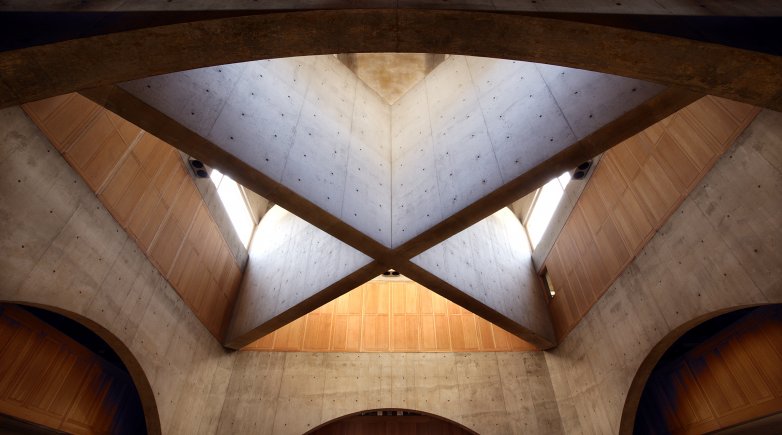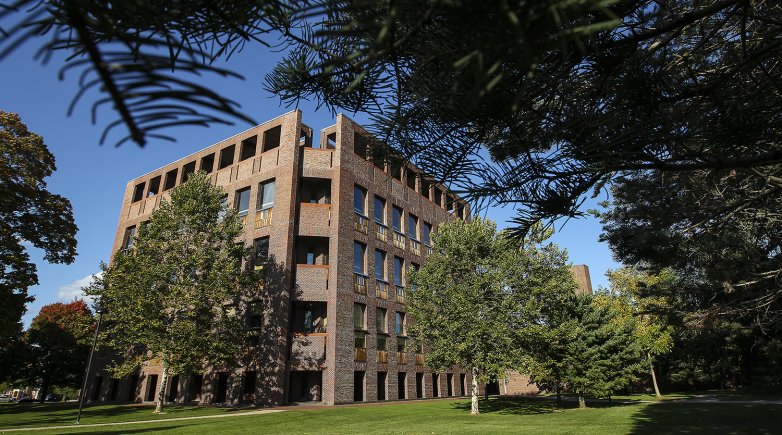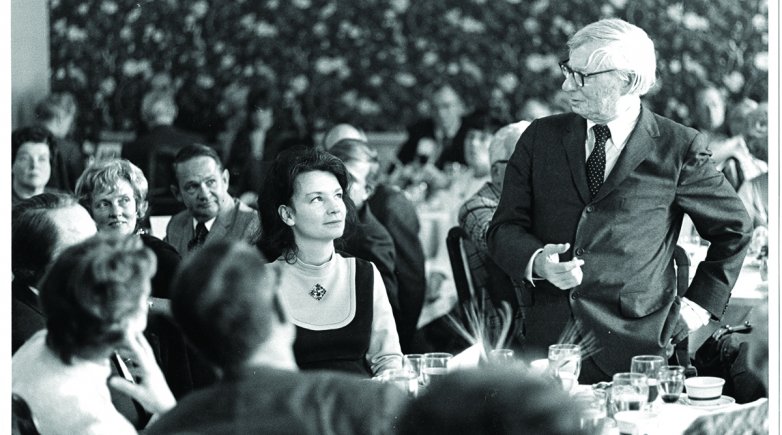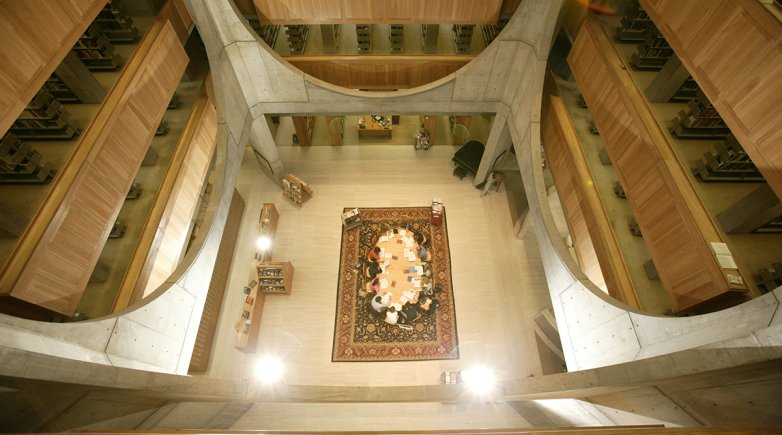How do I love the library? Archivist counts the ways.
Kahn collection curator says the Class of 1945 Library "is timeless in its conception and epic in its execution."
Few know Louis Kahn and his genius as well as Bill Whitaker. As curator and collections manager of the Architectural Archives of the University of Pennsylvania Weitzman School of Design, Whitaker lives Kahn’s work daily. He speaks frequently about Kahn and is the keeper of more than 36,000 of the architect’s drawings.
And still, as Whitaker addressed assembly Friday to talk about Kahn and his creation, the Class of 1945 Library, he couldn’t hide his envy of Exonians and their proximity to a masterpiece.
“I come here as a guest, as a visitor, as an architect, and I come and go,” he said. “You have four years with this building.
“It is a great privilege to live amongst a building of this quality,” Whitaker said. “To see it, to experience it, to look at the light, to look at the world through it. You will learn in this building, you may make some long-term friendships that will come out of the building, but you all have the opportunity to learn from this building and to receive its simple gifts.”
Whitaker’s visit was part of the Academy’s celebration of the library and the 50th anniversary of its opening. He is one of a legion of Kahn admirers in general and enthusiasts about Exeter’s library in particular. The building is a magnet for architects and design lovers worldwide.




